 It's been happening for years now. On the day after elections like last Tuesday's, media figures begin navel gazing to figure out how pre-election polls, created by dozens of independent pollsters using dozens of different methodologies, could all find the same thing but turn out to be so wrong once the election results are in.
It's been happening for years now. On the day after elections like last Tuesday's, media figures begin navel gazing to figure out how pre-election polls, created by dozens of independent pollsters using dozens of different methodologies, could all find the same thing but turn out to be so wrong once the election results are in.
The presumption is that the results are always right, and if they don't match the pre-election polling, its the polling that must be wrong, as opposed to the election results.
On Wednesday morning, after Tuesday's mid-term election surprise in which Republicans reportedly won handily in race after race despite pre-election polls almost unanimously predicting much closer races or outright Democratic victories, FiveThirtyEight statistics guru Nate Silver declared "The Polls Were Skewed Toward Democrats".
His analysis of aggregated averages from dozens of different pollsters and polls this year found that the performance of Democrats was overestimated by approximately 4 percentage points in Senate races and 3.4 points in gubernatorial contests. Silver's assessment relies on a "simple average of all polls released in the final three weeks of the campaign," as compared to the (unofficial and almost entirely unverified) election results reported on Tuesday night. He doesn't suggest there was anything nefarious in the polling bias towards Dems this year, simply that the pollsters got it wrong for a number of speculative reasons.
Citing the fact that nearly all of the polls suggested Democrats would do much better than they ultimately did, when compared to the reported election results, Silver asserts it wasn't that the polls were more wrong that usual, per se, but that almost all of them were wrong in a way that appears to have overestimated Democratic performance on Election Day.
"This year's polls were not especially inaccurate," he explains. "Between gubernatorial and Senate races, the average poll missed the final result by an average of about 5 percentage points --- well in line with the recent average. The problem is that almost all of the misses were in the same direction."
Silver is much smarter than I when it comes to numbers; I'm happy to presume he has the basic math right. But he seems to have a blind spot in his presumption that the pre-election polls were wrong and the election results were right. That, despite the lack of verification of virtually any of the results from Tuesday night, despite myriad and widespread if almost completely ignored problems and failures at polls across the country that day, and despite systematic voter suppression and dirty tricks that almost certainly resulted in election results (verified or otherwise) that were skewed toward Republicans...
No doubt you're familiar by now with many of the surprising results Silver cites --- he describes them as "missed 'calls'" and "errors". For example, he notes, pollsters erred in the governor's races "including in Illinois and Kansas and especially in Maryland, where Republican Larry Hogan wound up winning by 9 percentage points despite trailing in every nonpartisan poll released all year."
In Senate contests, he wrote earlier on Wednesday, "Some of the worst misses came in states like Kentucky and Arkansas where the Republican won, but by a considerably larger margin than polls projected. There was also a near-disaster in Virginia. It looks like Democratic incumbent Mark Warner will pull out the race, but the polls had him up by 9 points rather than being headed for a photo finish."
There are many more examples you likely know by now. There were similar surprises in some ballot measures and down-ticket races as well. For example, in Kansas, controversial Republican Sec. of State Kris Kobach was reportedly "tied" with his Democratic challenger last week, according to KSN-TV's SurveyUSA poll. Yet, according to the results on Kobach's own KS Secretary of State site, he "won" the election by a remarkable 18 points. (That's a single poll, not an average of many, but you get the idea.)
Those results, as well as the ones cited by Silver, could, in fact, be correct. The trouble is a) we don't know, because nobody bothers to verify the computer-reported results (even in states which use paper ballots systems that could be verified, unlike states that use touch-screen systems) and b) they ignore all of the problems with voting systems and the ability of voters to even access them in the first place.
While many Americans may be familiar with the surprise of Tuesday's reported results, not nearly as many are aware of the problems that plagued voters across the country. So, here, for those who aren't regular BRAD BLOG readers, are just a few examples of those problems where not all, but most, seemed to skew the election and its results away from Democratic voters and towards the GOP:
• Polling place Photo ID and other voter ID voting restrictions have been shown, over and over again, in study after study and court case after court case, to adversely and disproportionately disadvantage Democratic-leaning voters. Wendy Weiser of NYU Law School's Brennan Center for Justice released a report on Wednesday, asking "how much of a difference did new voting restrictions", making it "harder to vote in 21 states" this year, have on the reported outcome of the elections?
Weiser rounds up up summaries of data in four states suggesting that "in several key races, the margin of victory came very close to the likely margin of disenfranchisement."
In the Kansas gubernatorial race, Weiser explains, Gov. Sam Brownback (R) beat challenger Paul Davis (D) by "less than 33,000 votes". That, despite a strict Photo ID law "put into effect right before the 2012 election, and a new documentary proof of citizenship requirement for voter registration," implemented by Sec. of State Kobach. "We know from the Kansas secretary of state that more than 24,000 Kansans tried to register this year but their registrations were held in 'suspense' because they failed to present the documentary proof of citizenship now required by state law."
Silver cites the pre-election polling average in the state that gave the Democrat Davis a 2.8 point advantage over Brownback in the days leading up to the election. Brownback reportedly won the race on Tuesday --- Silver calls it the "Actual Result" --- by 3.8 points, a 6.6 swing between pre-election polls and election results.
How many voters couldn't vote because they were blocked due to Kobach's scheme to disallow voters who didn't turn in some sort of "proof" of citizenship, even though they'd registered to vote with the national voter registration form that says nothing about a need to supply such documents?
Weiser goes on to cite the Senate race in Virginia, where Democratic U.S. Senator Mark Warner, who had been pegged by pre-election polls to win by 8.5 points, beat Republican challenger Ed Gillespie by just .6, or "just over 12,000 votes". That, despite the state's new Photo ID law, enacted last year, which, according to the Virginia Board of Elections, means that "198,000 'active Virginia voters' did not have acceptable ID this year." Moreover, as Silver himself estimated when he worked for the New York Times (he now works for ESPN), such restrictive voting laws reduce turnout by about 2.4%, meaning, according to Weiser, "a reduction in turnout by more than 52,000 voters" in Virginia.
In Alabama, on the Friday before the election, the state Attorney General quietly issued an edict that Public Housing IDs would no longer be allowable for use in voting there under that state's Photo ID voting law. How many lost their right to vote on Tuesday?
In Arkansas, though the state's Photo ID restriction was struck down by the state Supreme Court after being found a violation of the state's constitution, poll workers were reportedly asking voters for Photo ID anyway, leading the Arkansas Times to declare there were "voter suppression reports from all over" on Election Day and a "steady stream of complaints...from voters who say election officials around Arkansas demanded a photo ID before they could vote today."
In that state, pre-election polls predicted that Democratic Sen. Mark Pryor was likely to lose to Republican Tom Cotton by 4.7 points. The results show him as having lost by 17.
In Texas, reportedly, "the number of provisional ballots cast more than doubled since the last mid-term election in 2010." That, after the U.S. Supreme Court allowed a strict polling place Photo ID law to be implemented this year, and despite a U.S. District Court finding, after a full trial, that the GOP law was "purposefully discriminatory", an "unconstitutional poll tax" and could disenfranchise as many as 600,000 disproportionately minority and poor registered voters.
The Government Accountability Office (GAO) found in a study earlier this year that polling place Photo ID restrictions in Kansas and Tennessee had decreased voter turnout in those states by 2 to 3% after they were enacted in 2012, and at even higher rates for minority and young voters.
While we'll have to wait to learn more about the specific effect of Photo ID restrictions on voters this year --- and we'll never know how many didn't even bother to show up, knowing that they lacked the specific type of Photo ID now needed to vote --- is it too early to consider how all of that voter suppression affect the reported election results this year in TX, AR, AL, KS and VA? More or less than the "Democratic bias" Silver finds in almost all of the pre-election polling averages?
• The Electronic Voter ID system went down for still unknown reasons in Florida in the Democratic stronghold of Broward County, resulting in voters who were unable to vote on Election Day. Gov. Rick Scott (R) is said to have defeated former Gov. Charlie Crist (D) there by just over 1%. Moreover, as Weiser notes, a host of new voting restrictions enacted by Florida Republicans over the last several years, included "a decision by Scott and his clemency board to make it virtually impossible for the more than 1.3 million Floridians who were formerly convicted of crimes but have done their time and paid their debt to society to have their voting rights restored." Might any of that had an adverse effect on the Democrats' results in the Sunshine State Tuesday night, an effect that wasn't picked up on in pre-election polls?
• Mysterious robocalls over the weekend before the election resulted in 2,000 election judges failing to show up for work at all in Illinois' Democratic stronghold of Chicago on Tuesday morning. The failure of one-fifth of the city's judges to show up resulted in many polls being short-handed during the morning rush or unable to open at all. Might that have affected the reported results in the Illinois Governor's race where the incumbent Democrat Pat Quinn was expected to win by .3, according to Silver's aggregated poll averages, but ended up losing instead by almost 5 points?
• Touchscreen votes were reported as flipping Democratic to Republican in Texas, Tennessee, Pennsylvania, Virginia and elsewhere, including in North Carolina where 100% unverifiable touch-screen votes reportedly flipped from incumbent Sen. Kay Hagan (D) to her challenger Thom Tillis (R). She was predicted to win by a small margin in the pre-election poll average --- and even, reportedly, according to Election Day exit polls late in the day --- but she ended up reportedly losing by almost 2 points or about 48,000 votes.
North Carolina voters also faced the most extreme voter suppression law since the Jim Crow era this year. Hundreds of voters are known to have been disenfranchised during the much smaller turnout during the state's primary election in April. As Weiser reports, during "the last midterms in 2010, 200,000 voters cast ballots during the early voting days now cut" by the new Republican law, a huge number of them were minority voters who tend to vote Democratic. Moreover, same-day registration for voters was nixed this year by the same law. Additionally, she writes, "7,500 voters cast their ballots outside of their home precincts" in 2012, but this year, the U.S. Supreme Court allowed all of those provisions of the new GOP law to be implemented, even after the U.S. 4th Circuit Court of Appeals had struck them down, finding "that African-American voters disproportionately used those electoral mechanisms and that House Bill 589 restricted those mechanisms and thus disproportionately impacts African-American voters."
Might any of those issues have resulted a Republican skew in the election results, many of which are based on ballots cast that were cast and registered --- either correctly or incorrectly, we can never know --- on 100% unverifiable electronic voting systems?
(For the record, unverifiable touch-screen votes also reportedly flipped in either unknown directions or from Republicans to Democrats in Arkansas, Illinois, Virginia and Maryland. Though reports of D to R flips are historically much more common, they also flip from R to D as well on occasion, a factor not accounted for at all in pre-election polling or in Silver's analysis of results.)
• Registration issues plagued voters in a number of states. I've already mentioned the thousands of Kansas voters unable to vote in state elections this year, but what of those 50,000 voter registrations in Georgia collected during a progressive registration drive there? It's alleged they were never entered into the system by the state's Republican Sec. of State. Might that have had an impact on the perceived "Democratic bias" in the polls compared to the results collected on the state's 100% unverifiable touch-screen voting system in the race for Georgia's open U.S. Senate seat between Democrat Michelle Nunn and Republican David Perdue? In that contest, the pre-election poll average projected a 6.4% better result for the Democrat than the one ultimately reported by the computer tabulators.
In New Mexico and in Louisiana, where there were important races for Governor and the U.S. Senate respectively, the GOP-controlled states are accused of undermining voter registration by failing to properly implement National Voter Registration Act requirements to offer voter registration opportunities to residents via social services outlets, such as those applying for drivers licenses or medicaid or food stamps.
Across the nation, as Greg Palast reported at Al-Jazeera last week, millions of voters were threatened with disenfranchisement in some 20 states, thanks to an "Interstate Crosscheck" database created by Kansas' Kobach with a number of other GOP-run states. The database, while secretly implemented, is supposed to check for possible multiple registrations by voters in those states. Palast reports, however, that the system is plagued with errors, disproportionately targets minority voters, and might have resulted in unknown numbers of voters inappropriately removed from the voting rolls entirely and/or challenged at the polls on Election Day.
• Not enough paper ballots left voters unable to vote verifiably in Ferguson, MO and elsewhere in St. Louis County, as well as the city of St. Louis. The jurisdictions scrambled to print and deliver new ballots throughout the day, but many voters were effected, particularly during the morning rush and late in the day, when lines grew long and polls had to stay open to accommodate those who could afford to wait. At one polling place in Florissant, a town just adjacent to Ferguson, a poll supervisor reported that when they opened the polling place in the morning "they only had five of one of the paper ballots when they typically need about 300 of that version."
Could the difficulty voters had casting a vote in the predominantly African-American areas of St. Louis served to skew final results in favor of Republicans there?
We could go on. And on. And on. And on. There were many more problems across the country, and undoubtedly others yet to come to light, but you get the idea. And, of course, none of that takes into account whether any of the reported results themselves were accurately tabulated by the oft-failed computer systems which tabulate almost all our nation's ballots.
How much impact did all of those factors --- and more we haven't mentioned and more still rolling in --- have on the results? We don't yet know. But to simply presume the independent pre-election polls by dozens of different pollsters, each using their own unique methodology, were all simply wrong (skewed towards Democrats) seems presumptuous at best, at this hour, and recklessly misleading from someone like Silver (whose work, I should add, I generally admire).
Perhaps a question that he might better be able to help us all answer is: "What are the statistical odds of so many races all skewing towards the GOP?"
Am I suggesting that elections were stolen by the Republicans? There is no doubt it was a good year for Republicans. But there is also no doubt that it was GOP voter suppression laws that affected turnout and the ability of many voters to be able to cast their votes at all, so that could certainly have swung a number of contests. On the other hand, stealing that many elections wholesale in that many states via electronic voting systems, without leaving evidence behind --- particularly on our nation's hodge-podge of different types of systems --- would be a very difficult feat, most likely requiring a very large conspiracy. In such cases, it's usually difficult to keep such a large conspiracy quiet. There are a few ways it could be done with a somewhat smaller conspiracy of insiders, but we'll leave that discussion for another day.
Whether races would have had a different winner is ultimately unknown, but all of the items mentioned above could have had an effect on the polling averages versus the reported election results.
While Silver's focus on polling and reported results is understandable, the analysis he offered is itself a skewed picture of what actually happened on Tuesday. It presumes that election results reported on our terrible electronic voting and tabulation systems, amidst voter suppression efforts unprecedented since the Jim Crow era, are accurate, while it was the pollsters who must have got it all wrong --- and wrong, by a remarkable coincidence, in a way that supposedly overestimated Democratic turnout in almost every case.
While an analysis of such numbers is interesting media bait --- particularly for those to whom elections are little more than a horse race, rather than an exercise of the fundamental right which supposedly protects all others in this nation --- it offers Americans a skewed and misleading story. It suggests, without any evidence to support such a broad assumption, that the results were "right" and the pollsters were "wrong."
That may be an easy to story to tell, but it just isn't an accurate or helpful one. It serves only to skew our nation and our media even further from a once-great representative democracy to little more than a biennial ESPN Sports Center extravaganza.
(Snail mail support to "Brad Friedman, 7095 Hollywood Blvd., #594 Los Angeles, CA 90028" always welcome too!)
|


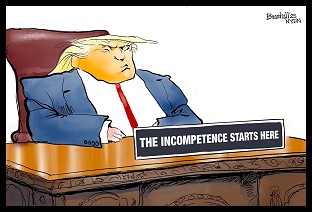 Sunday 'Great Start!' Toons
Sunday 'Great Start!' Toons Vets Push Back at Trump, Musk Plan to Slash Health Care, 80K V.A. Jobs: 'BradCast' 3/27/25
Vets Push Back at Trump, Musk Plan to Slash Health Care, 80K V.A. Jobs: 'BradCast' 3/27/25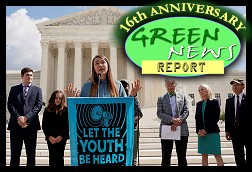 'Green News Report' 3/27/25
'Green News Report' 3/27/25
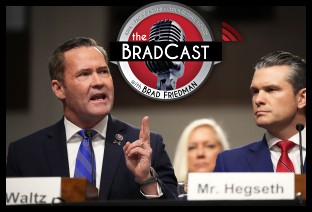 Signal Scandal Worsens for Trump, GOP; Big Dem Election Wins in PA: 'BradCast' 3/26
Signal Scandal Worsens for Trump, GOP; Big Dem Election Wins in PA: 'BradCast' 3/26 'Emptywheel' on Why Trump NatSec Team Should 'Resign in Disgrace' After Signal Chat Debacle: 'BradCast' 3/25/25
'Emptywheel' on Why Trump NatSec Team Should 'Resign in Disgrace' After Signal Chat Debacle: 'BradCast' 3/25/25 'Green News Report' 3/25/25
'Green News Report' 3/25/25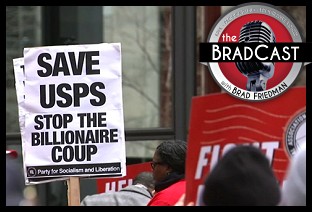 USPS 'Belongs to the People, Not the Billionaires': 'BradCast' 3/24/25
USPS 'Belongs to the People, Not the Billionaires': 'BradCast' 3/24/25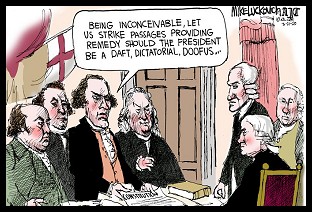 Sunday 'Suddenly Conceivable' Toons
Sunday 'Suddenly Conceivable' Toons 'Green News Report' 3/20/25
'Green News Report' 3/20/25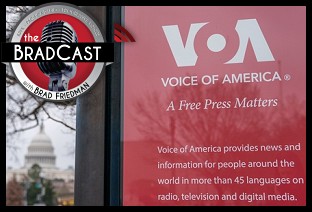 We're ALL Voice of America Now: 'BradCast' 3/20/25
We're ALL Voice of America Now: 'BradCast' 3/20/25 What Trump's 'Timber Production Expansion' Means (and Costs): 'BradCast' 3/19/25
What Trump's 'Timber Production Expansion' Means (and Costs): 'BradCast' 3/19/25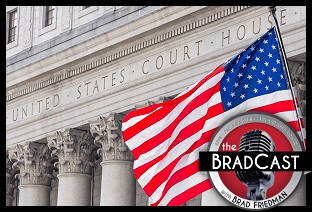 Courts Largely Holding Against Trump, Musk Lawlessness: 'BradCast' 3/18/25
Courts Largely Holding Against Trump, Musk Lawlessness: 'BradCast' 3/18/25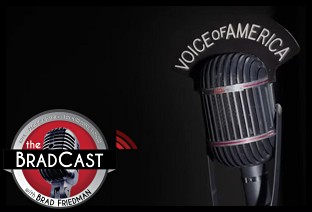 Chief VOA Reporter on Outlet Falling Silent First Time Since 1942: 'BradCast' 3/17/25
Chief VOA Reporter on Outlet Falling Silent First Time Since 1942: 'BradCast' 3/17/25 Trump EPA Unveils Plans to Endanger, Sicken Americans: 'BradCast' 3/13/25
Trump EPA Unveils Plans to Endanger, Sicken Americans: 'BradCast' 3/13/25 Trump Nixed Enforce-ment Against 100 Corp. Lawbreakers: 'BradCast' 3/12/25
Trump Nixed Enforce-ment Against 100 Corp. Lawbreakers: 'BradCast' 3/12/25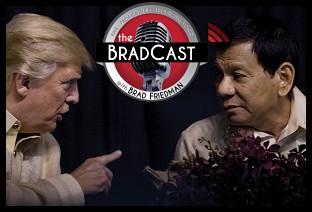 Bad Day for 'Strongmen': 'BradCast' 3/11
Bad Day for 'Strongmen': 'BradCast' 3/11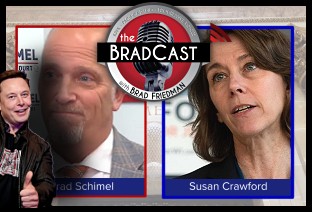 WI Election Could Flip Supreme Court Control, Musk Jumps In: 'BradCast' 3/10
WI Election Could Flip Supreme Court Control, Musk Jumps In: 'BradCast' 3/10
 VA GOP VOTER REG FRAUDSTER OFF HOOK
VA GOP VOTER REG FRAUDSTER OFF HOOK Criminal GOP Voter Registration Fraud Probe Expanding in VA
Criminal GOP Voter Registration Fraud Probe Expanding in VA DOJ PROBE SOUGHT AFTER VA ARREST
DOJ PROBE SOUGHT AFTER VA ARREST Arrest in VA: GOP Voter Reg Scandal Widens
Arrest in VA: GOP Voter Reg Scandal Widens ALL TOGETHER: ROVE, SPROUL, KOCHS, RNC
ALL TOGETHER: ROVE, SPROUL, KOCHS, RNC LATimes: RNC's 'Fired' Sproul Working for Repubs in 'as Many as 30 States'
LATimes: RNC's 'Fired' Sproul Working for Repubs in 'as Many as 30 States' 'Fired' Sproul Group 'Cloned', Still Working for Republicans in At Least 10 States
'Fired' Sproul Group 'Cloned', Still Working for Republicans in At Least 10 States FINALLY: FOX ON GOP REG FRAUD SCANDAL
FINALLY: FOX ON GOP REG FRAUD SCANDAL COLORADO FOLLOWS FLORIDA WITH GOP CRIMINAL INVESTIGATION
COLORADO FOLLOWS FLORIDA WITH GOP CRIMINAL INVESTIGATION CRIMINAL PROBE LAUNCHED INTO GOP VOTER REGISTRATION FRAUD SCANDAL IN FL
CRIMINAL PROBE LAUNCHED INTO GOP VOTER REGISTRATION FRAUD SCANDAL IN FL Brad Breaks PA Photo ID & GOP Registration Fraud Scandal News on Hartmann TV
Brad Breaks PA Photo ID & GOP Registration Fraud Scandal News on Hartmann TV  CAUGHT ON TAPE: COORDINATED NATIONWIDE GOP VOTER REG SCAM
CAUGHT ON TAPE: COORDINATED NATIONWIDE GOP VOTER REG SCAM CRIMINAL ELECTION FRAUD COMPLAINT FILED AGAINST GOP 'FRAUD' FIRM
CRIMINAL ELECTION FRAUD COMPLAINT FILED AGAINST GOP 'FRAUD' FIRM RICK SCOTT GETS ROLLED IN GOP REGISTRATION FRAUD SCANDAL
RICK SCOTT GETS ROLLED IN GOP REGISTRATION FRAUD SCANDAL VIDEO: Brad Breaks GOP Reg Fraud Scandal on Hartmann TV
VIDEO: Brad Breaks GOP Reg Fraud Scandal on Hartmann TV RNC FIRES NATIONAL VOTER REGISTRATION FIRM FOR FRAUD
RNC FIRES NATIONAL VOTER REGISTRATION FIRM FOR FRAUD EXCLUSIVE: Intvw w/ FL Official Who First Discovered GOP Reg Fraud
EXCLUSIVE: Intvw w/ FL Official Who First Discovered GOP Reg Fraud GOP REGISTRATION FRAUD FOUND IN FL
GOP REGISTRATION FRAUD FOUND IN FL


































